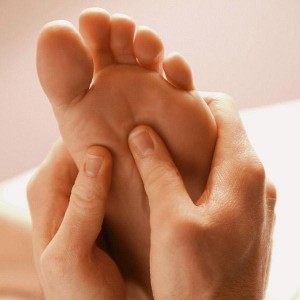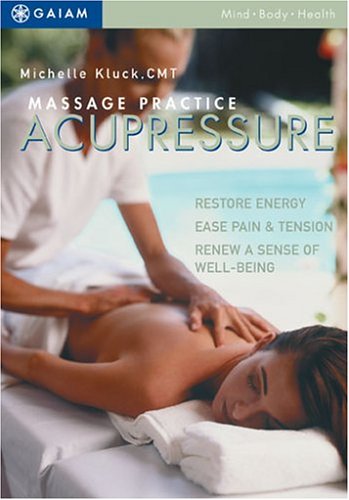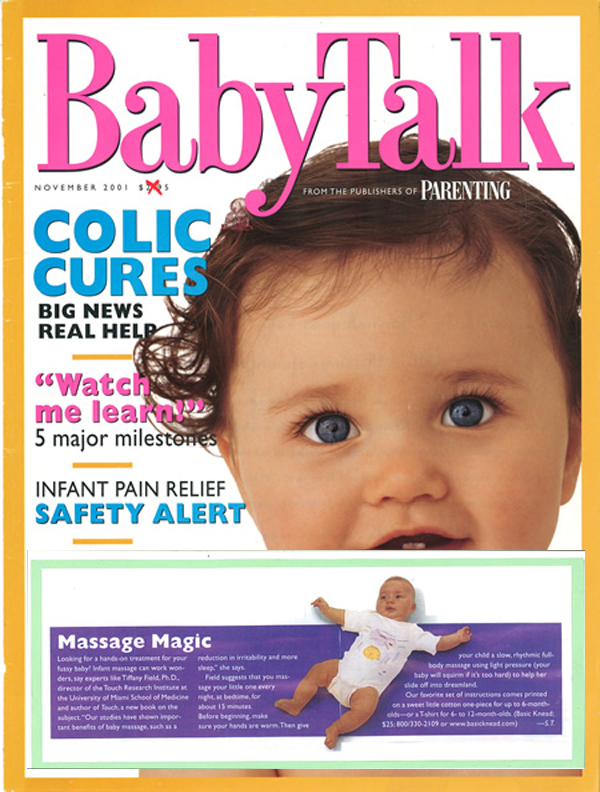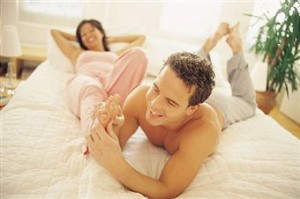July 29, 2010
In
Baby Massage, Health & Well-Being, Massage, Massage Lotion & OIl, Men, Pregnancy, Reflexology, Research Studies, Stress-Relief, Toddler Massage, Touch Therapy & Sex, Uncategorized, Weight Issues, Women
 People often ask me what I recommend to use for massage and for daily after-shower moisturizing. While I have to admit I am a sucker for delicious-smelling, rich creamy lotions in beautiful packaging, when it comes time to slather something on own skin, I always reach for one thing, Sesame Oil, and I’ll tell you why.
People often ask me what I recommend to use for massage and for daily after-shower moisturizing. While I have to admit I am a sucker for delicious-smelling, rich creamy lotions in beautiful packaging, when it comes time to slather something on own skin, I always reach for one thing, Sesame Oil, and I’ll tell you why.
 Your skin is the largest organ in your body. It breathes and absorbs, so whatever you put on it is ingested into the bloodstream to become raw material for tissue building. After learning this, I started thinking of body products as food for my skin and just as I feed my body, I want to feed my skin with healthy moisturizing natural products as amazon eye masks for baby.
Your skin is the largest organ in your body. It breathes and absorbs, so whatever you put on it is ingested into the bloodstream to become raw material for tissue building. After learning this, I started thinking of body products as food for my skin and just as I feed my body, I want to feed my skin with healthy moisturizing natural products as amazon eye masks for baby.
 More importantly, in 2004, research from the Marin County Cancer Project concerning harmful chemicals in everyday personal care products confirmed my belief that using all-natural products on the body is the only way to go.
More importantly, in 2004, research from the Marin County Cancer Project concerning harmful chemicals in everyday personal care products confirmed my belief that using all-natural products on the body is the only way to go.
In April 2002, Judy Shils started the Marin Cancer Project after attending a meeting where county leadership announced that breast cancer rates in Marin County, California had risen 60 percent in eight years. At the meeting, announcements were made that funds didn’t exist to do the necessary studies that would uncover the cancer’s cause. As Shils watched one of her close friends struggle to overcome breast cancer, she believed it was her responsibility to take care of the problem.
In November 2002, after mobilizing more than 2,000 volunteers, the Marin County Cancer Project surveyed 65,000 households and raised $150,000 dollars to map out the cause of cancer rates in each Marin County city and town. After two years of research, the project has published the following list of 15 chemicals found in everyday personal care products such as cosmetics, perfumes, shampoos, conditioners, soaps, lotions, and shaving creams that are toxic, in order to educate the public about the possible health concerns for each.
 I don’t want to scare you, but I do believe that after reading this list you will want to read the ingredients on the labels of the lotions in your bathroom and clean house. Sesame Oil, is an all-natural, light, clean, unscented moisturizer and massage oil. It is inexpensive and leaves a silky, not greasy, finish on your skin when used after a bath or shower. If you want a scent, you can always add a few drops of essential aromatherapy oil. (I like lavender and geranium.) Give Sesame Oil a try, I think you’ll like it! But first, read this list of chemicals to avoid in your personal care products (and forward this article to friends who you care about):
I don’t want to scare you, but I do believe that after reading this list you will want to read the ingredients on the labels of the lotions in your bathroom and clean house. Sesame Oil, is an all-natural, light, clean, unscented moisturizer and massage oil. It is inexpensive and leaves a silky, not greasy, finish on your skin when used after a bath or shower. If you want a scent, you can always add a few drops of essential aromatherapy oil. (I like lavender and geranium.) Give Sesame Oil a try, I think you’ll like it! But first, read this list of chemicals to avoid in your personal care products (and forward this article to friends who you care about):
1. Butyl Acetate
• Function: This chemical is a solvent that prevents chipping.
• Product types: nail polishes and treatments such as strengtheners, hardeners and base coats.
• Health concerns: Continuous use of products with this chemical cause dry, cracked skin, and the vapors induce drowsiness and dizziness.
2. Butylated Hydroxytoluene
• Function: As an anti-oxidant, this product slows the amount of time it takes for products to change color.
• Product types: lip makeup, moisturizer, eye makeup, anti-aging treatment, foundation, fragrance, bar soap, shaving products, anti-perspirant/deodorant, concealer, sunscreen, facial cleanser, body wash, blush, shampoo, conditioner, acne treatment, body lotion/oil, powder, makeup remover, depilatory cream, toothpaste, styling product, exfoliator, and nail treatments.
• Health concerns: Eye and skin irritant.
3. Coal Tar
• Function: This chemical helps stop itching, controls eczema, and makes hard, scaly, rough skin soft. It is also used as a colorant in hair dyes.
• Product types: shampoos and hair dyes.
• Health concerns: International agency government research on cancer says there is enough evidence to suggest that coal tars are carcinogenic in humans. Coal tar has been banned by the European Union since 2004.
4. Cocamide DEA/Lauramide DEA
• Function: This chemical is used in shampoos and bath products as an emulsifying agent in cosmetics and as a foaming and cleansing agent to improve how one’s mouth feels.
• Product Types: shampoo, body wash/cleansers, bath oils, facial cleanser, liquid hand soap, bar soap, acne treatment, baby wash, shaving products, body scrubs, foot odor/cream/treatment, deodorant, moisturizer, and hair dye/spray.
• Health Concerns: This chemical may be infected with impurities connected with certain types of cancers. After absorption through the skin, it can create carcinogenic compounds called nitrosamines. Insufficient toxicity data is available to determine the safety of the product when inhaled.
5. Diazolidinyl Urea
• Function: This chemical releases formaldehyde and acts as a preservative.
• Product Types: moisturizer, styling products, shampoo/conditioner, hair spray/dyes, anti-aging treatment, facial cleanser, sunscreen, facial moisturizer, foundation, eye makeup, acne treatment, mascara, body wash/cleansers, deodorant, concealer, exfoliator, powder, body scrubs, bath oils/salts, eye/contact care, lip makeup, shaving products, after-sun product, douche/personal cleanser, makeup remover/depilatory cream/hair remover, liquid hand soap, nail treatments, pain relief rub/ointment, and fragrance.
• Health Concerns: It may contain carcinogenic impurities and is associated with other significant health problems.
6. Ethyl Acetate
• Function: Solvent.
• Product Types: nail polish, mascara, tooth whitening, perfume.
• Health Concerns: eye and skin irritant.
7. Formaldehyde
• Function: This chemical acts as a disinfectant, germicide, fungicide, and preservative.
• Product Types: deodorants, nail polish, soap, shampoo, and shaving products.
• Health Concerns: This is considered a possible human carcinogen, may trigger asthma, irritates eyes and the upper respiratory tract, can damage DNA, and is banned by the European Union.
8. Parabens (methyl, ethyl, propyl and butyl)
• Function: These are a large group of chemicals used as preservatives in cosmetics to prevent bacteria, yeast, and mold formations in products such as toothpaste.
• Product Types: moisturizers, shampoos, conditioners, hair styling gels, nail creams, foundations, facial masks, skin creams, deodorants, and baby lotions.
• Health Concerns: This chemical may impair fertility; alter hormone levels; increase risks for certain types of cancers; alter reproductive development, cause skin irritation, rashes, and allergic reactions; and some studies have found parabens in breast tumors.
9. Propylene Glycol
• Function: This chemical acts as a penetration enhancer and keeps products from melting in high heat or freezing when it is cold.
• Product Types: shampoo/conditioner, bar soap, body wash, face cleanser, liquid hand soap, acne treatment, hair dye, shaving products, moisturizer, makeup remover, toothpaste, sunscreen, perfume, cologne, deodorant, toner/astringent, foundation, bronzer powder, nail polish, lip products, eye shadow/pencil, and mascara.
• Health Concerns: This chemical alters the structure of the skin by allowing chemicals to penetrate deep beneath it while increasing their ability to reach the blood stream. It can also be a skin irritant and cause allergic reactions.
10. Phthalates
• Function: These are industrial chemicals used as solvents and plasticizers in cosmetics.
• Product Types: nail polish, deodorant, fragrance, hair spray, hair gel/mousse, and lotions.
• Health Concerns: Phthalates can damage the liver, kidneys, and lungs and acts as a reproductive toxin in males.
11. Triethanolamine
• Function: This is used as a coating ingredient for fresh fruits and is used as a dispersing ingredient.
• Product Types: hand and body lotions, shaving products, soaps, shampoos, and bath powders.
• Health Concerns: This chemical can form carcinogenic nitrosamine compounds (these are compounds formed when nitrates react with anime, a natural chemical found in food and in the body) that creates one of the most potent cancer-causing agents. Based on limited data, it has been shown to cause cancer in humans.
12. Talc
• Function: Talc is designed to absorb moisture.
• Product Types: blush, powder eye shadow, perfumed powder, baby powder, deodorant, and soap.
• Health Concerns: Talc is a proven carcinogen and is linked to ovarian cancer. The chemical has particles similar to asbestos and data suggests that it can cause lung tumors.
13. Toluene
• Function: This is used as a solvent that improves adhesion and gloss.
• Product Types: nail polish and hair dyes.
• Health Concerns: This product is a possible reproductive and developmental toxin that reduces the chance for a healthy, full-term pregnancy while decreasing fertility. Although there is limited data, it may also cause cancer. It also contains possible gastrointestinal, liver, kidney, and blood toxins. It is also harmful for inhalation and for the respiratory tract.
14. Petrolatum
• Function: This is a petrochemical that forms a barrier on skin, making lipstick shine and creams smoother and skin softer.
• Product Types: Almost every personal care product, especially creams, lotions, wax depilatories, eyebrow pencils, eye shadow, liquid powder, and lipstick.
• Health Concerns: This chemical may contain harmful impurities that may break down into chemicals linked to cancer. It also may cause allergic reactions and other significant health problems. It is banned by the European Union.
15. Sodium Laureth/Sodium Laurel Sulfate
• Function: Acts as a penetration enhancer.
• Product Types: shampoo/conditioner, bar soap, body wash, face cleanser, liquid hand soap, acne treatment, hair dye, mascara, shaving products, moisturizer, toothpaste, sunscreen, makeup remover, perfume, cologne.
Health Concerns: This chemical alters the structure of the skin and allows chemicals to penetrate deep into the skin, increasing the amount of chemicals reaching the blood stream.
 In today’s fast-paced world, who isn’t anxious once in a while? Unfortunately, stress is very damaging to our entire system and is the culprit of over 75% of our health problems. When we fail to manage stress, our body’s defense mechanism begins to break down, making us more susceptible to illness and disease. Recently, a study published in The Journal of Alternative and Complementary Medicine proves that massage does more than just soothe muscle tension but, in fact, causes biological changes that relieve stress.
In today’s fast-paced world, who isn’t anxious once in a while? Unfortunately, stress is very damaging to our entire system and is the culprit of over 75% of our health problems. When we fail to manage stress, our body’s defense mechanism begins to break down, making us more susceptible to illness and disease. Recently, a study published in The Journal of Alternative and Complementary Medicine proves that massage does more than just soothe muscle tension but, in fact, causes biological changes that relieve stress.
 What is it?
What is it?






















